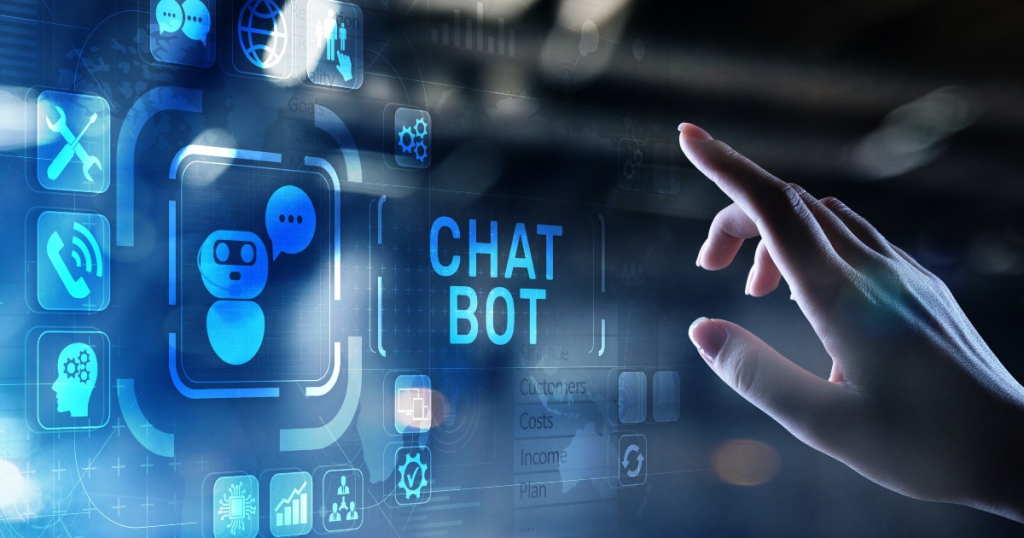
What is AI-Powered Virtual Assistants?
AI-Powered Virtual Assistants are digital assistants that leverage artificial intelligence (AI) technologies to understand and respond to human inquiries and commands. These assistants simulate human-like interactions and offer a variety of services and support to users.
AI-Powered Virtual Assistants utilize natural language processing (NLP) techniques to comprehend and interpret human speech or written input. Through AI algorithms, they analyze the input, extract relevant information, and generate appropriate responses or perform specific tasks.
Virtual Assistants come in various forms, including smartphone applications, web-based interfaces, smart speakers, and chatbots. Popular examples include Siri by Apple, Alexa by Amazon, Google Assistant, and Cortana by Microsoft.
These assistants can perform a wide range of tasks, such as answering general knowledge questions, providing weather updates, setting reminders, scheduling appointments, sending messages, making phone calls, playing music, and controlling smart home devices. The capabilities of virtual assistants continue to expand as AI technology progresses and more integrations are developed.
AI-Powered Virtual Assistants rely on machine learning, deep learning, natural language processing, and speech recognition technologies. By continually learning from user interactions and data, they aim to improve their performance and deliver more accurate and personalized results over time.
In conclusion, AI-Powered Virtual Assistants enhance user experiences by providing convenient and efficient access to information, services, and automation, making them an increasingly integral part of our daily lives.
Types of AI-Powered Virtual Assistants?

AI-Powered Virtual Assistants come in various types, each serving specific platforms, industries, or purposes. Here are some common categories:
- Personal Assistants: Personal assistants are designed for individual users and are typically found on smartphones or smart speakers. Siri (Apple), Google Assistant, and Amazon Alexa are examples. They can perform tasks like setting reminders, sending messages, making calls, and providing personalized recommendations.
- Customer Service Assistants: These virtual assistants are employed by businesses to handle customer inquiries and offer support. They are often integrated into websites or chat platforms and utilize AI to understand customer queries and provide relevant information or assistance. They can help with product recommendations, troubleshooting, order tracking, and more.
- Healthcare Assistants: Virtual assistants developed for the healthcare industry provide medical information, answer health-related queries, schedule appointments, and remind patients to take medications. They may also offer guidance on symptoms and suggest appropriate actions.
- Virtual Shopping Assistants: Designed to enhance the online shopping experience, these assistants provide product recommendations, answer queries about products or services, assist in website navigation, and facilitate the purchasing process.
- Smart Home Assistants: Integrated into smart home devices, these assistants enable users to control various IoT (Internet of Things) devices in their homes. They can manage lights, thermostats, security systems, and other connected devices using voice commands or mobile apps. Examples include Amazon Alexa and Google Assistant.
- Business Assistants: Business-oriented assistants assist with tasks such as scheduling meetings, managing calendars, sending reminders, and providing business-related information. They are designed to boost productivity and efficiency in professional settings.
- Language Translation Assistants: These assistants specialize in language translation and can help users translate text or spoken language in real-time. They are useful for facilitating communication across language barriers and can be integrated into chat platforms or handheld devices.
These are just a few examples of the types of AI-Powered Virtual Assistants available. The field of virtual assistants is continuously evolving, with new specialized assistants being developed to cater to specific industries or user needs.
Capabilities of AI-Powered virtual assistants

AI-Powered virtual assistants possess a wide range of capabilities that enable them to perform various tasks and provide valuable services to users. Here are some key capabilities they exhibit:
- Natural Language Processing: AI-Powered virtual assistants utilize natural language processing techniques to understand and interpret human language, both spoken and written. This allows for seamless communication and interaction with users.
- Information Retrieval: These assistants have access to extensive databases and can swiftly retrieve relevant information from various sources. They can answer general knowledge questions, provide weather updates, deliver news updates, and offer information on diverse topics.
- Task Automation: Virtual assistants excel at automating repetitive tasks, freeing up users’ time and effort. They can schedule appointments, set reminders, manage calendars, send emails or messages, and perform other routine tasks, enhancing productivity.
- Personalized Recommendations: By analyzing user preferences and behavior patterns, AI-Powered virtual assistants can provide personalized recommendations. They can suggest movies, music, books, restaurants, or other products based on individual interests, improving the user experience.
- Voice Interaction: Virtual assistants support voice-based interactions, allowing users to communicate with them using natural speech. Users can issue commands, ask questions, and execute tasks using voice commands, offering a convenient and hands-free experience.
- Smart Home Control: Virtual assistants seamlessly integrate with smart home devices, empowering users to control a variety of IoT devices using voice commands or mobile apps. They can adjust lighting, regulate thermostats, manage security systems, and interact with other connected devices within the home.
- Language Translation: Some virtual assistants feature real-time language translation capabilities, enabling communication across language barriers. They can translate text or spoken language into different languages, facilitating multilingual interactions.
- Personalized Assistance: Virtual assistants employ machine learning techniques to adapt to user preferences over time. By analyzing user interactions, they can provide more personalized and contextually relevant responses and recommendations.
- Contextual Understanding: AI-Powered virtual assistants strive to understand the context of a conversation or query to provide accurate and meaningful responses. They can recall previous interactions, refer to past queries, and maintain coherent conversations.
- Third-Party Integrations: Virtual assistants can integrate with various applications, services, and platforms, expanding their functionality. They can interact with third-party apps, control smart devices, access online services, and execute actions across multiple platforms.
These capabilities continue to evolve and improve as AI technology advances, enabling virtual assistants to become increasingly intelligent, versatile, and capable of understanding and meeting user needs.
The future of AI-Powered virtual assistants

The future of AI-Powered virtual assistants holds significant potential for advancements and transformative capabilities. Here are some anticipated trends and developments that may shape their future:
- Improved Natural Language Understanding: Virtual assistants will continue to enhance their ability to understand and interpret natural language. They will become better at comprehending complex queries, understanding context, and providing accurate and nuanced responses.
- Enhanced Personalization: Future virtual assistants will offer even more personalized experiences by leveraging user data, preferences, and historical interactions. They will be able to tailor recommendations, anticipate user needs, and adapt their responses to individual preferences.
- Multi-Modal Interaction: Virtual assistants will support multi-modal interaction, combining voice, text, and visual elements. They will process and respond to images, videos, and other media forms, enabling diverse and interactive communication.
- Contextual Awareness: Virtual assistants will develop a deeper understanding of user context. They will consider factors like location, time of day, user behavior patterns, and environmental conditions to deliver more relevant and context-specific assistance.
- Proactive Assistance: Future virtual assistants will become more proactive in anticipating and fulfilling user needs. They will actively provide relevant information, recommendations, and reminders without explicit user prompts, acting as intelligent personal assistants.
- Emotional Intelligence: Virtual assistants will be designed to understand and respond to human emotions. They will recognize and adapt to user emotions, displaying empathy and providing appropriate support and responses.
- Expanded Domain Expertise: Virtual assistants will gain expertise in specific domains or industries. They will possess deep knowledge and understanding of specialized fields, offering more accurate and valuable insights and assistance in those areas.
- Integration with IoT: Virtual assistants will seamlessly integrate with an increasing number of Internet of Things (IoT) devices, enabling comprehensive smart home and smart environment control. They will manage interconnected devices and facilitate automation and control.
- Augmented Reality (AR) and Virtual Reality (VR) Integration: Virtual assistants will integrate with AR and VR technologies, providing immersive and interactive experiences. They will assist users in navigating virtual environments, accessing information, and performing tasks within these simulated realms.
- Enhanced Security and Privacy: As virtual assistants handle sensitive user data, there will be a greater focus on robust security and privacy measures. Future virtual assistants will employ advanced encryption, authentication, and privacy protocols to ensure user data is protected.
These anticipated advancements in AI-Powered virtual assistants are driven by ongoing research and development in natural language processing, machine learning, and artificial intelligence. As technology progresses, virtual assistants will continue to evolve, becoming more intelligent, intuitive, and indispensable companions in our daily lives.
Thanks,






Leave a Reply
You must be logged in to post a comment.